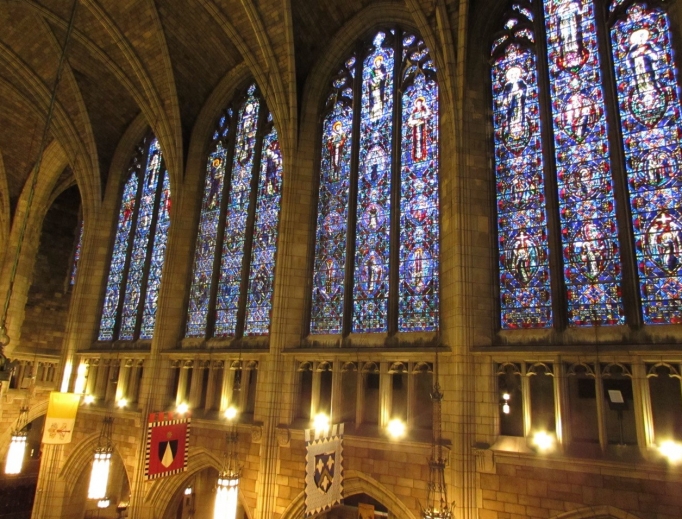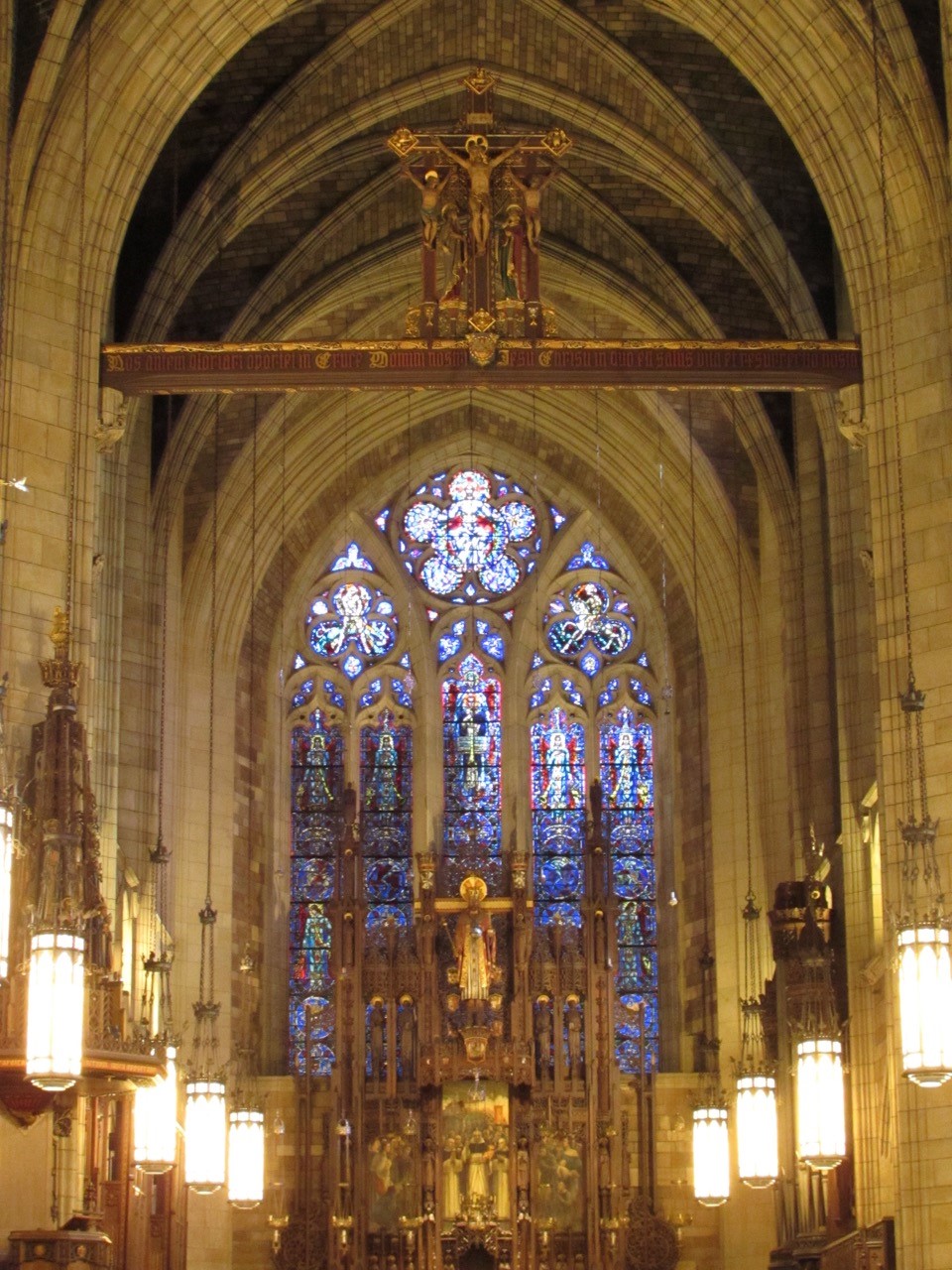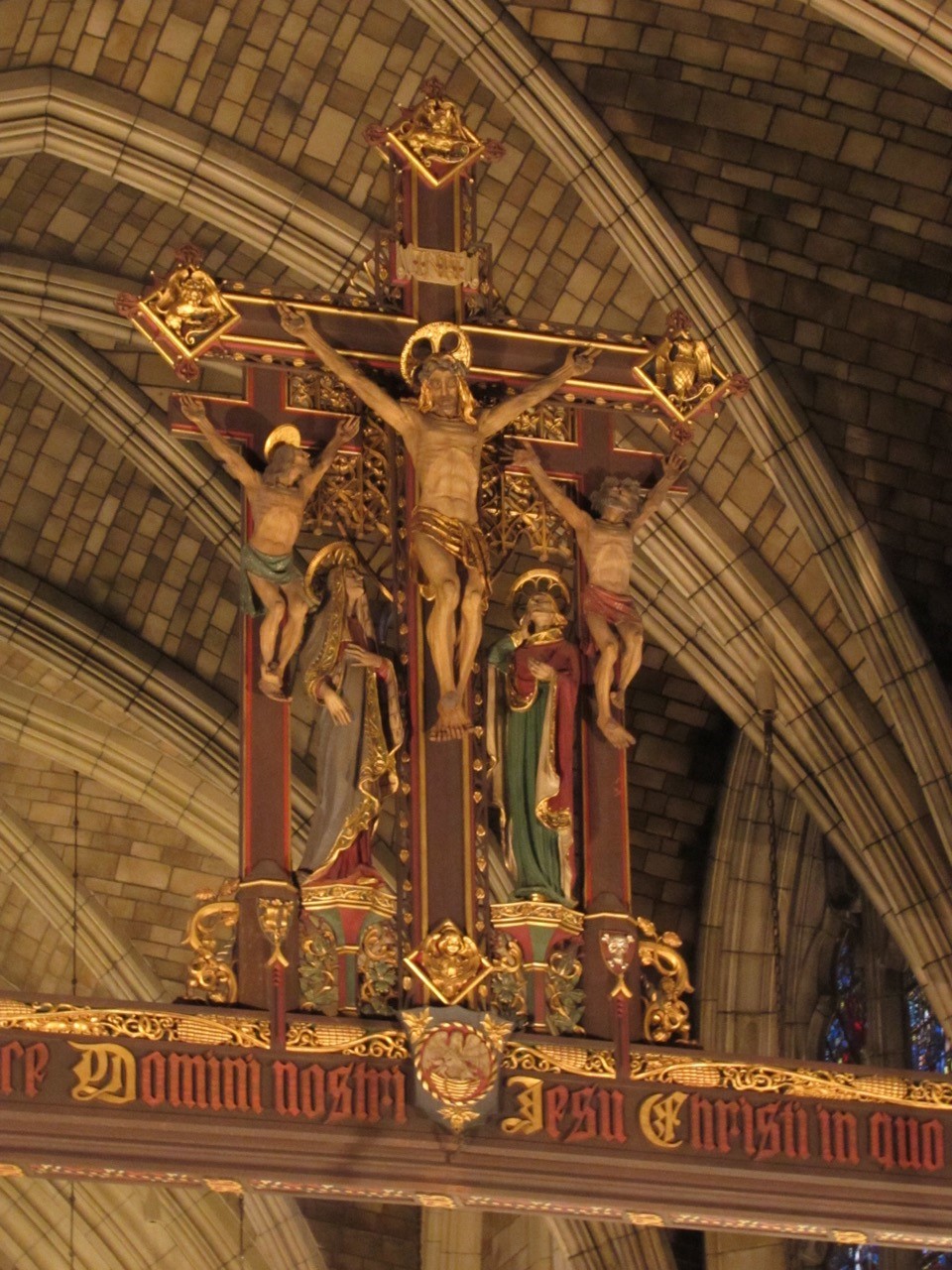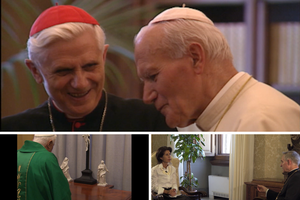Tribute to the ‘Angel of the Apocalypse’ in the Capital of the World
New York historic church marks the 600th anniversary of St. Vincent Ferrer’s death.

Manhattan’s active Upper East Side is well removed from the hubbub of Midtown and the rush around Grand Central Station. Smaller buildings with stores on the avenues and townhouses on cross streets aren’t lost in the forest of skyscrapers.
This bit of breathing room is why the striking St. Vincent Ferrer Church on the corner of Lexington Ave. and 66th St. doesn’t have to compete with 80-story glass towers.
Little of the neighborhood existed in 1867, when Dominicans founded St. Vincent’s as the second parish on the Upper East Side amid expanses of open acreage that existed then in this part of Manhattan. Nine years earlier, construction was just beginning on St. Patrick’s Cathedral back in Midtown, which then didn’t have much by way of a town to it, as it was considered very remote and rural.
When this present English Gothic edifice replaced the first church in a growing, bustling metropolis in 1918, it was instantly on its way to being named, by 1996, one of the official “Landmarks of New York.”
The beautiful stained glass is in the style of Chartres Cathedral, one of the greatest architectural wonders of the medieval age. And like the French cathedral, this Big Apple church is a spiritual and architectural treasure.

Looking at St. Vincent’s from across the street, one’s eyes immediately focus on the large carved Holy Rood over the front doors and then move to the delicate, intricate tracery of the great rose window above.
There’s a majesty to the time-darkened granite church that seems to transport the faithful back to old New York, and beyond that, to the gothic grandeur of churches in Europe, especially those in England. It’s easy to forget this church is only 101 years old, fairly new in comparison to its edifices of inspiration.
Sacred Inspiration
Every detail works together to announce that this is sacred ground, and prayer is the first order of the visit, especially as the massive piers of block sandstone, the gothic arches along the nave, and the soaring ceiling carry eyes immediately to the sanctuary. The intense cobalt blues and ruby reds of the tall stained-glass windows enfold and draw visitors into the sanctity of the place.

Lined with choir stalls, the deep sanctuary gives a proscenium-like, theatrical effect. Then the high altar shines with magnificent detail.
First, there’s a line of seven sanctuary lamps above the high altar of various marbles, lapis lazuli and pearl. Then there is the huge, magnificent tabernacle. Its gold work is ornamented with enameled scenes from the Old Testament that anticipate the Eucharist and from the New Testament that relate directly to the Body and Blood. A Crucifixion scene graces the top of the tabernacle.
Saintly Namesake
Above, the painting on the soaring reredos portrays St. Vincent Ferrer in the center, leading a procession of friars. The flame above his head represents his Pentecostal gift of being understood in any language, and the trumpet he holds is associated with the angel announcing the Last Judgment, as he often preached on the Second Coming. Side paintings represent the sick he cured and the dead he raised through the power of Jesus Christ.
Dominican saints, including Thomas Aquinas, Pius V and Catherine of Sienna, are depicted near him.
Crowning the reredos is a magnificent icon-like Christ Seated in Majesty. Higher still, the great east Rose Window depicts the seven angels of the Apocalypse. St. Vincent, whose feast is celebrated April 5, was often called the “Angel of the Apocalypse” because of his preaching of penance and preparation for judgment. (See accompanying blog.)
This year marks the 600th anniversary of his death in 1419.
For 20 years, St. Vincent preached all over western Europe, converting tens of thousands, multitudes that included thousands of Jews and Moors, schismatics and heretics. And he was known as a great miracle worker.
In this church, art adds to the awe-inspiring holy sight and invites meditation.
The Dominican nuns who staffed the parish school got daily close-up views when they used the nuns’ gallery high in the sanctuary. Modeled after St. George’s Gallery in Windsor Castle, the nuns’ gallery continues the church’s English-Gothic connection.
High above, where sanctuary and nave meet, the Holy Rood beam, carved of oak and polychromed, is considered one of the finest in the country.

Holy Highlights
Speaking of the finest, Bertram Goodhue, considered the most accomplished neo-Gothic architect of his time, designed this church. Even with works such as the West Point Chapel at the prestigious military academy overlooking the Hudson River north of the city and St. Bartholomew’s Church on Park Avenue to his credit, he stated in a 1920 letter now in parish hands that he considered St. Vincent’s to be his finest work.
A wide-ranging artist, Goodhue had his hand in everything in his creation, from doorknobs to hinges. It was his unique idea to have the Stations of the Cross painted — highly unusual for the time — to look as if they were painted by different artists at different times and then collected by the church. So we see them in the style of Giotto, for example, and even in the iconographic style of the Eastern Church. Telford and Ethel Paullin were the artists.
Everything in the church was custom-made for it by the best artisans of the time. Lee Laurie sculpted, among other things, the Holy Rood over the entrance. His works include the Atlas sculpture located directly across from St. Patrick’s Cathedral. St. Vincent’s stained-glass windows are considered among the finest in the country.
The tall triple lancet windows that line the nave present Dominican saints in elaborate patterns and are reminiscent of medieval European churches. Working on them were artists such as Henry Young and Gordon Gutherie. Master artisans often thought Gutherie’s glass work was finer than that of the renowned Louis Comfort Tiffany, for whom he worked before doing these windows. Guthries’ panes also adorn the friars’ chapel to the right of the sanctuary.
The stunningly beautiful west Rose Window overflows with detail. In the center depiction is St. Dominic. This image is surrounded with six trefoils depicting Dominican saints. More of them appear in the five lancets below the image of the order’s founder. Then the 15 mysteries of the Rosary appear in rows underlining the saints as their foundation.
Depictions of Mary are prominent in a series of shrines honoring her within the church, including the elaborate Rosary Chapel and Altar, from 1933. The very intricately carved reredos for this chapel frames a colorful vision done in relief of Mary presenting the Rosary to St. Dominic while the Christ Child on her lap gives a blessing and a trio of cherubs gaze intently on the scene. In the center is Mary in relief, and to the sides, several saints under gothic canopies accompany this image of the Blessed Mother.

Two more side chapels are distinguished by ironwork grilles and silhouette-like scenes. The scenes honor St. Joseph in the chapel dedicated to him. His statue stands above an alabaster reredos.
In the rear of the church, by the confessionals, is a Pietà that was displayed at the 1939 World’s Fair.
Time seems to stand still in this sacred space, spanning the centuries and joining them together in this Gothic church, which shares the property on which it was built with several buildings, including the priory, convent and Holy Name Society building. The entire complex is tied together along Gothic lines.
Catholic travelers to New York City will find St. Vincent Ferrer’s is a landmark not only of architectural-liturgical artistry, but of great serenity and spiritual refreshment.
Joseph Pronechen is a Register staff writer.
















